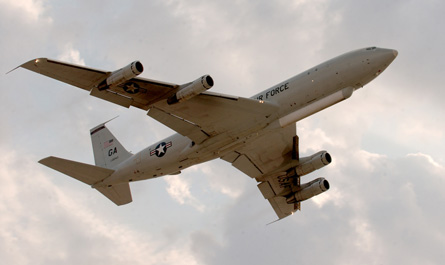Northrop Grumman will start re-engining the E-8C JSTARS airborne ground surveillance system aircraft, but the programme's future remains unclear as the US Air Force continues to debate the fate of its Boeing 707-based fleets.
The USAF has awarded two contracts worth $300 million to complete design and certification work, and to start producing Pratt & Whitney JT8D-219 engines for the E-8C programme.
Compared with the JSTARS' aged JT3D-based TF33 engines, the JT8Ds improve maximum power by one-sixth and dramatically boost the reliability of the entire system. Northrop estimates that the cost of re-engining will be repaid within 15 years for each aircraft simply by lowering the E-8C's maintenance bill.
 |
|---|
© US Air Force |
"The JT3D engines, which have been the workhorse for 707s since their production, were our number one issue," says Dale Burton, Northrop's vice-president for intelligence, surveillance and reconnaissance programmes.
The upgrades, however, remain unfunded beyond the first production lot as USAF officials grapple with a fleet-wide ageing problem.
In addition to the 17 operational E-8Cs, the USAF also operates the 707-based E-3 Airborne Warning and Control System and RC-135 Rivet Joint fleets, among others.
The USAF originally planned to replace all three fleets with the Boeing 767-based E-10 multi-mission command and control platform (below), but cancelled that contract in 2005.
 |
|---|
© US Air Force |
A separate deal for Boeing to deliver a 767-400ER to serve as a platform was cancelled in September 2007, although Boeing finished building the airframe without a customer.
One option for the USAF is to re-engine the entire 707 fleet to ensure its viability for perhaps another half-century. It also could launch a replacement programme for a widebody platform, with the Northrop/EADS North America A330 airframe and the 767 as the likely competitors.
Northrop, however, emphasises that the latter strategy requires a lengthy and uncertain competition and development phase, while the requirement to re-engine the fleet is becoming increasingly critical as the TF33s wear out.
A key indicator for discerning the USAF's strategy may be a decision about whether to install the defunct E-10A's sensor system - a wide area search sensor still under development within the Northrop/Raytheon multi-platform radar technology insertion programme - on the E-8C or another platform.
Source: Flight International
















